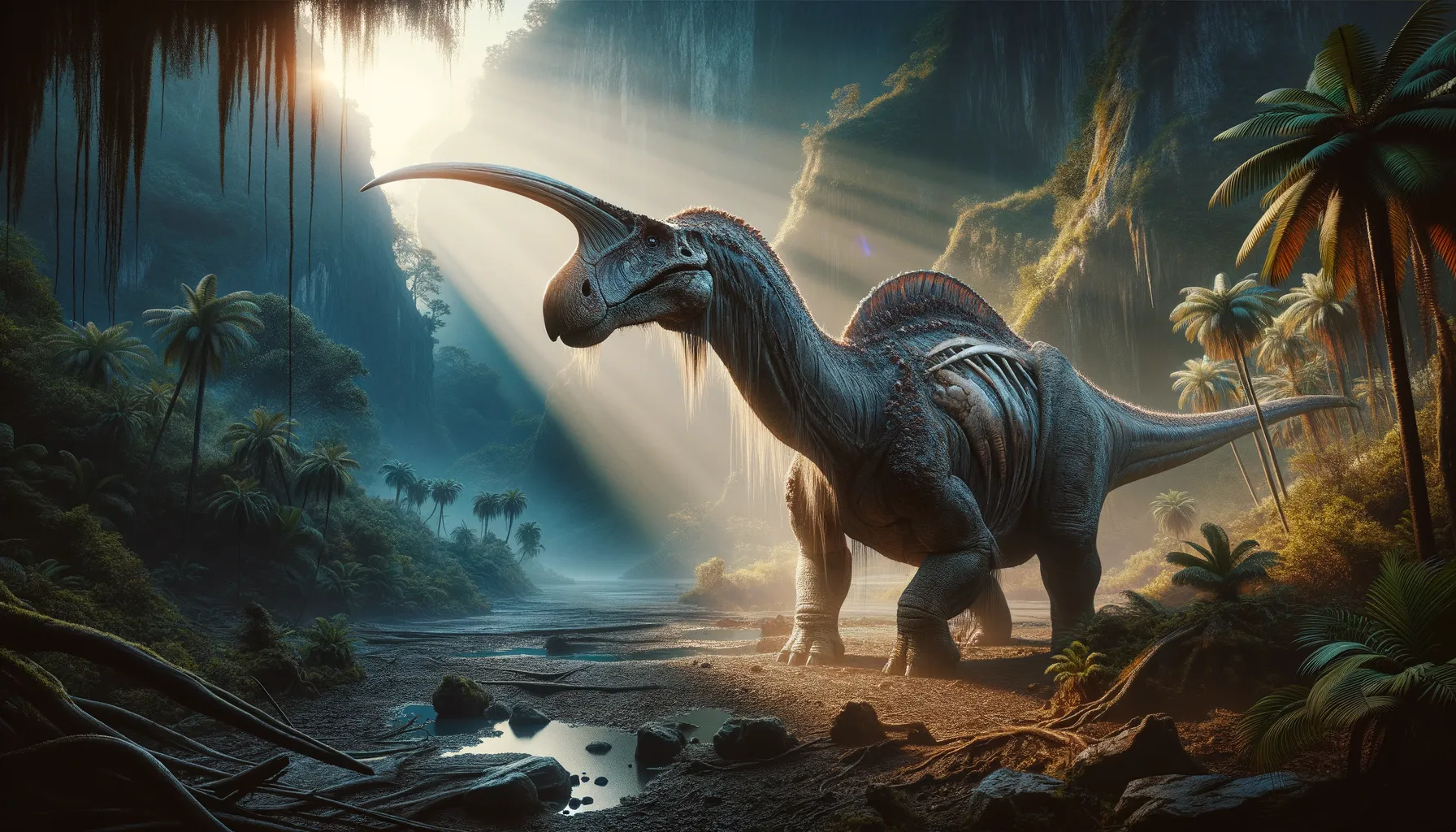
Priodontognathus
Armored giant of the Jurassic forest.
Period
Jurassic
Length
Approximately 30 feet long.
Height
Around 10 feet tall at the shoulders.
Weight
Estimated to weigh several tons.
Priodontognathus is a large, herbivorous dinosaur from the Jurassic period. It is known primarily from its fossilized remains, offering insight into its massive body structure and armored features. Though not the most famous dinosaur, its atypical teeth and possible body armor suggest a specialized diet and defense mechanisms. The name Priodontognathus reflects its distinctive tooth structure, which has intrigued paleontologists since its discovery in the late 19th century.
Diet
Priodontognathus was herbivorous, feeding on the plentiful ferns, cycads, and conifers of its time. Its teeth were adapted for grinding and shredding plant material, indicating a diet rich in fibrous vegetation.
Hunting
As a herbivore, it did not hunt but rather spent its days foraging for plant matter. Its potential defensive adaptations suggest it was more concerned with avoiding predators.
Environmental challenges
Priodontognathus lived in an era dominated by volcanic activity, which could have affected its food sources and habitat. Climate shifts during the Jurassic period posed challenges in terms of adjusting to varying temperatures and humidity levels. Its large size may have also made it less agile in escaping predators, necessitating a need for alternative defense strategies. Social behavior may have played a role in defense against environmental threats and predators.
Speed
Likely slow-moving due to its size.
Lifespan
Could live several decades if reached maturity.
First discovery
Discovered in 1869 by Harry Govier Seeley.
Fun Facts
- Priodontognathus was originally named based on very limited fossil remains, just a few bones.
- The name 'Priodontognathus' means 'saw tooth jaw,' which hints at its possible dental features.
- It was a plant-eating dinosaur from the Late Jurassic period, about 150 million years ago.
- Priodontognathus is thought to have been part of the Stegosauria group, famous for their bony plates.
- The actual appearance and lifestyle of Priodontognathus remain largely a mystery due to scarce evidence.
- This dinosaur’s discovery highlights the challenges paleontologists face when classifying fossils with minimal remains.
- Priodontognathus' story reminds us that dinosaur science is always evolving with new discoveries.
Growth and Development
Young Priodontognathus likely experienced rapid growth to reach their massive size quickly, a trait common among large dinosaurs. Parental care is unknown but cannot be ruled out, potentially contributing to higher survival rates of offspring. As they reached maturity, their size alone would have deterred many predators. Longevity depended on successful avoidance of threats and plentiful food sources throughout its lifetime.
Habitat
Priodontognathus lived in forested environments with a mix of open areas and dense plant life, providing ample food. These forests were teeming with diverse plant species, offering a robust diet for herbivorous dinosaurs. Water sources were likely abundant, vital for sustaining such a large animal. Its habitat would have included a variety of defensive refuge options, including forest cover and rugged terrain.
Interaction with other species
Priodontognathus shared its habitat with various herbivorous and carnivorous dinosaurs, competing for the same plant resources. Its large size and potential defensive capabilities meant it had few natural predators. Inter-dinosaur competition for food would have shaped its foraging behavior and strategies. Potential social behavior among herds might have offered protection against threats from both predators and environmental changes.
Natural lifespan
Natural lifespan could extend as long as conditions were favorable and natural threats minimal.
Reproduction
Reproductive strategies remain speculative but likely included egg-laying, as is common with reptiles. Nest building and possible parental care would have increased offspring survival chances. Juveniles would have grown rapidly to decrease vulnerability to predators. Group nesting sites may have provided additional protection and support.
Social behaviour
Priodontognathus may have exhibited herd behavior, providing safety in numbers. Herding would promote social interactions and shared defense strategies against predators. Solitary adults might have roamed between herds, increasing genetic diversity. Social structures would have facilitated teaching younger generations survival skills.
Fossil locations
Fossils of Priodontognathus have been primarily found in England. These discoveries offer valuable information about Jurassic herbivores in Europe. Limited fossil records make precise behavior and appearance assumptions challenging. Additional finds could expand our understanding of this dinosaur’s range and ecological role.
